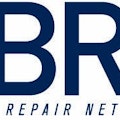Vehicle safety technology to impact collision repairers
The rapid and continued evolution of vehicle safety technology has impacted the collision repair industry by reducing the number of vehicle collisions. Manufacturers continually improve the crash-worthiness of their vehicles, while implementing sophisticated on board crash-avoidance technology designed to reduce collisions.
Like this article? Sign up to receive our weekly news blasts here.The Society of Collision Repair Specialists (SCRS) kicked off its Repairer Driven Education (RDE) series at SEMA 2012 by focusing on this topic. The session, titled: “Is New Vehicle Technology Endangering Your Business?” was presented by Kim Hazelbaker, Senior Vice President of the Highway Loss Data Institute (HLDI) and was offered free of charge to those who pre-registered.
The session began with a short opening address by John Waraniak, who leads SEMA’s advanced vehicle technology strategy, programs and initiatives. He emphasized the importance of preparation to collision repair-related businesses.
“We’re getting to the point where vehicle technology changes every six months, and you have to repair with knowledge,” said Waraniak. “When you master the latest techniques, the consumer will notice you and you will succeed. That makes sessions like this one important to your business.”
Hazelbaker -- an informed voice on vehicle safety technology who is involved with the crash testing undertaken by the Insurance Institute for Highway Safety and the Highway Loss Data Institute -- took the stage next and addressed the group for almost two hours, concluding with time for questions and answers from the audience.
In a presentation that was informative, entertaining, and profound -- incorporating the liberal use of film clips showing collisions in the institute’s “crash laboratory”, media coverage of vehicle safety, and how manufacturers market safety performance -- Hazelbaker covered the evolution of crash testing, its different flavors (frontal, side, rollover and small frontal overlap testing) and its potential impact on collision repairers. In almost every case the recommendations to vehicle manufacturers coming out of this testing has resulted in lower frequency and severity of collisions. While there is little question it saves lives, preserves property, and reduces insurance liability, the resulting impact of the process on the future of the collision repair industry is somewhat murkier.
The same is true of advances in collision avoidance technology. Hazelbaker described the wealth of high-tech systems in use today, including electronic stability control (a breakthrough that applies steering angle, rotation and speed sensors to the ABS concept); forward collision detection that automatically applies braking and activates restraint systems when a vehicle approaches another too rapidly from behind; pedestrian and animal sensors; lane departure warnings; and adaptive headlights that pivot adjust based on steering wheel movement, allowing the driver to “peek in the dark spaces” at night on curvy roads.
Though every one of these advances seems to support the theory that collisions may soon be a thing of the past, Hazelbaker was quick to point out that this conclusion lacks sufficient depth.
“While the long term trend will almost certainly be a decrease in collisions, these improvements will take a long time to permeate the market,” he said. “For example, air bags took from 1984 to 2010 to spread to 80 percent of the on- road fleet because there were plenty of older cars on the road. So even though we’re starting to see an increased incidence of vehicles with electronic stability control, for example, they probably won’t completely dominate the on-road fleet until 2040.”
In the meantime, collision repairers can plan and adapt their business to the changing market. There may even be an as yet unseen upside to the trend, such as an unexpected reduction in total loss collisions or the opportunity for collision repairers to specialize in the repair of these systems, which Hazelbaker believes will become less complex, more cost-effective and, therefore, more practical to repair.
In a dynamic, shifting marketplace, collision repairers will have to identify the products and services that will allow them to succeed. SEMA provides a host of such solutions to collision repairers, which is why SCRS is at the show.
“We’re trying to expand the possibilities for our members and the collision repair industry in general, and SEMA provides exposure to such alternatives,” said SCRS Executive Director Aaron Schulenburg. “However, if a business is going to successfully adjust to change, it needs to understand the precise nature of the change, knowledge we certainly believe this headline presentation provided, and which we are pleased to make available to the industry.”
For more information about SCRS visit www.scrs.com.
About the Author
